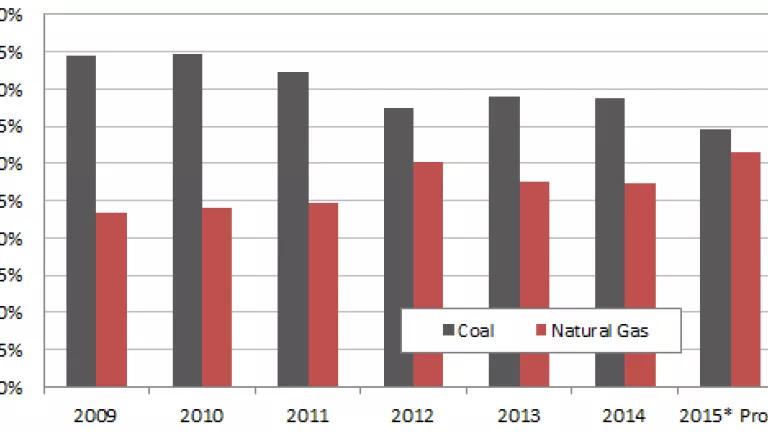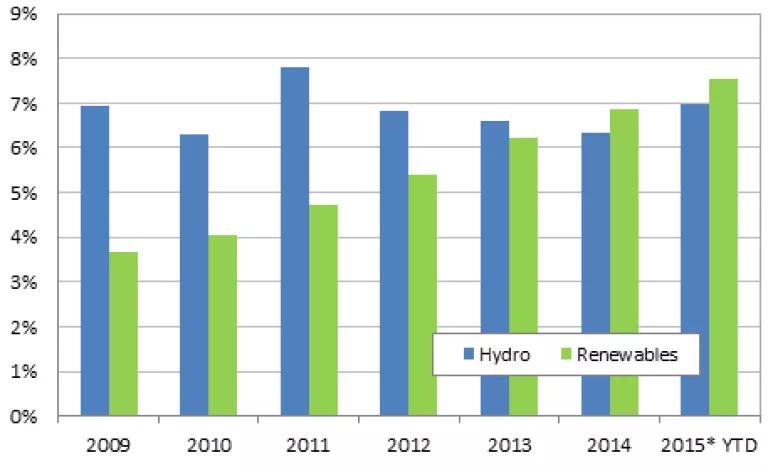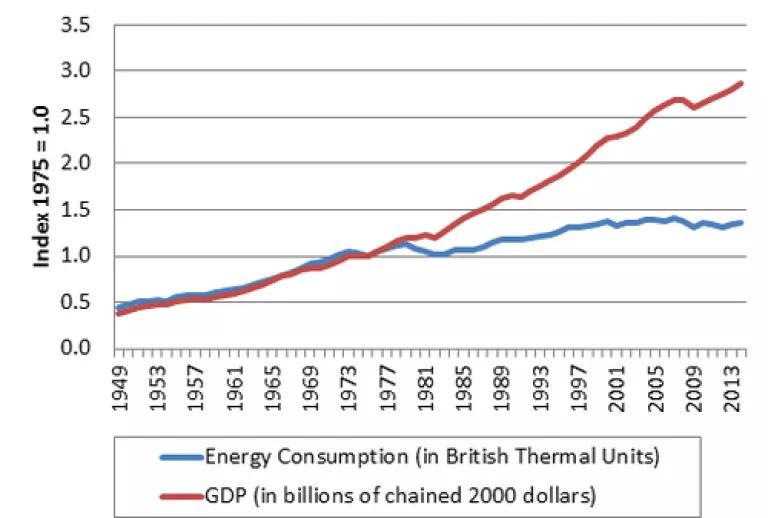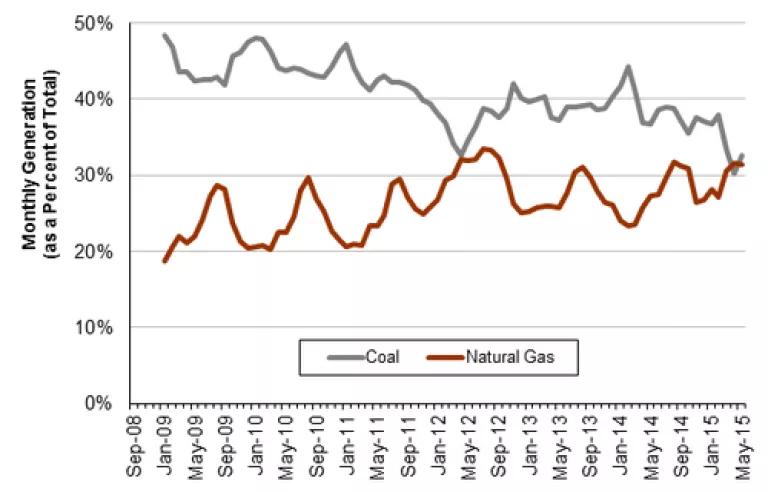
Government figures out today show that for the single month of April, history was made in the electric sector: For the first time, the amount of electricity generated from coal resources in one month was less than the amount generated from natural gas. This is one more sign that our electric grid is changing, but we still have a long way to go before we'll see clean, renewable energy replace these fossil fuels that harm our health and contribute to climate change when we burn them to generate electricity.
There's no question that the United States recently experienced a major upset (beyond the U.S. Men's National Team loss to Jamaica). But was that single monthly change in April actually a big deal? In itself, no. But what it indicates about the larger energy picture is actually worth taking stock of.
What's actually changing about electricity
There's a real shift from coal to natural gas power generation in the United States, in addition to renewable energy like wind and solar and smarter use of energy through efficiency. And it's happening right before our eyes, literally--if you were reading this back in 2009, the electricity powering your screen would have come largely from coal. To be precise, coal out-produced natural gas by a factor of two. But over the intervening years, that composition of our power mix has shifted substantially: natural gas has narrowed the gap with coal, and this year it will even give coal a run for its money (though it will still finish second, as you'll see below). Here's the gap closing in action:
Percent of U.S. Electricity Generated from Coal and Natural Gas
Meanwhile, the EIA stats show that non-hydro renewable energy (like electricity coming from solar panels and wind turbines - which emit no harmful air pollution) has been increasing its market share as well. We've seen the prolific growth of wind and solar resources in recent years, due to the continued, plummeting price of renewables and culminating in nearly a doubling of non-hydro renewable resources on the electric grid. Read: the electricity powering your screen today comes from twice as many solar panels and wind turbines as five years ago. Renewables still represent a much smaller portion of the total energy picture than coal or gas, but that is changing. By 2030, the Department of Energy estimates we can get more than a third of our nation's electricity supply from the wind and the sun alone.
One good measure of this renewable growth is comparing it to hydroelectric generation (power coming from hydroelectric dams). Historically, hydroelectric generation dwarfed that of solar panels and wind turbines. But now those non-hydro renewable resources produce more electricity than the conventional hydro resources. Here, the rapid rise of renewables to prominence in recent years:
Percent of U.S. Electricity Generated by Hydro Resources and Non-Hydro Renewables

What's driving these fundamental shifts in America's electric infrastructure? Coal increasingly cannot compete with lower-cost renewable energy (which has zero fuel costs) and natural gas (which has had low fuel costs recently, and lower maintenance costs than coal).
Over many decades, state and federal policies have helped get the renewable energy industry up and running (despite continuing to subsidize fossil fuel industries). But now, the competition is on and the alternatives to coal are winning. This has contributed to the large and unprecedented amount of coal plant retirements we've seen recently (including the largest single month ever of coal plant retirements, which also occurred in April--but caught little press). Which means less pollution from power plants burning coal.
Natural gas, however, has its own environmental impacts. While gas emits less carbon pollution when it's burned to make electricity, its development has a rampant methane emissions problem (a potent climate pollutant responsible for 25 percent of the warming we're experiencing today). On top of that, the process of extracting it, fracking, poses other serious health and environmental risks--from drinking water contamination to air pollution linked to serious health risks like cancer and birth defects. That is why NRDC is working hard to help our nation--and the world--close the gap between truly clean energy sources--like wind, solar, and efficiency--and all fossil fuels, as quickly as possible.
And the other major factor squeezing coal out of the picture? Energy efficiency: using our energy in smarter ways, so that at the end of the day, we need less energy for all our activities--and that means less from coal and natural gas plants. Energy efficiency reduces the amount of electricity sold, which makes the competition stiffer, and pushes the less-competitive resource (coal) off the table. All these efficiency improvements (like stopping leaky roofs and windows from wasting energy) monumentally reduce the total amount of energy we use. Decades of state and federal efficiency efforts have broken the link between economic growth and energy consumption that was so prevalent in postwar America--and to the point where today total energy growth has actually been negative in recent years--while economic growth remains positive.
U.S. Growth in Energy Consumption and Economic Product Since 1949

All these trends represent permanent and significant changes to our electric system. Coal is getting crowded out by stronger competitors in the marketplace, and that's the iceberg underneath April's "tip of the iceberg" data from EIA.
Which part is just a temporary change - in the short run
The monthly generation record set this spring was actually just temporary. While all the long-run trends above are reducing reliance on coal generation, the reason it dipped to being lower than natural gas is the routine maintenance that occurs in spring time--which is a relatively good time to take power plants offline for maintenance (because electricity needs are not at their highest summertime levels yet). This happened in April 2012 when coal generation came very close to falling below natural gas generation--but then almost instantly returned be the top generator. This monthly variation is typical: we often see a spring dip in coal generation and jump from natural gas generation.
Percent of U.S. Electricity Generation from Coal and Gas, by Month

Still, the iceberg beneath the headlines is worth paying attention to.
What's ahead
In the future, we'll need to be setting permanent, not temporary, records about how coal is surpassed by cleaner alternatives. (And NRDC will be working hard to make sure that those alternatives are renewables and efficiency.) That's especially true because the records being set about the planet's warming--like the fact that we are suffering from more "billion-dollar weather events" than ever before, or that the first half of this year has been the hottest since humans began keeping track--are not of the fleeting variety. The persistence of carbon in breaking atmospheric records compels us to accelerate this energy transformation.
